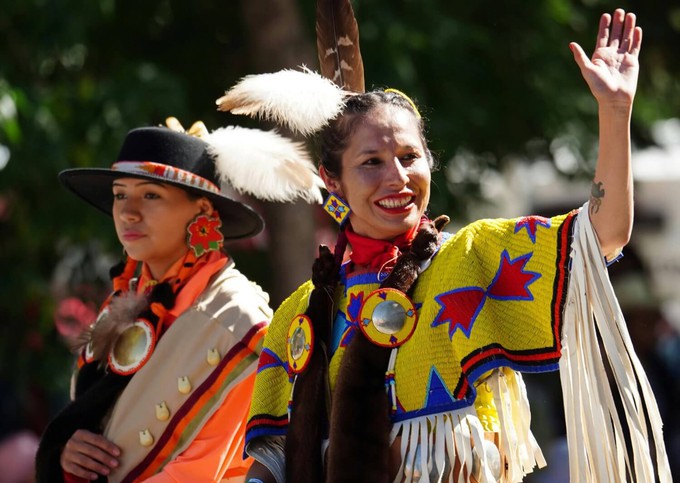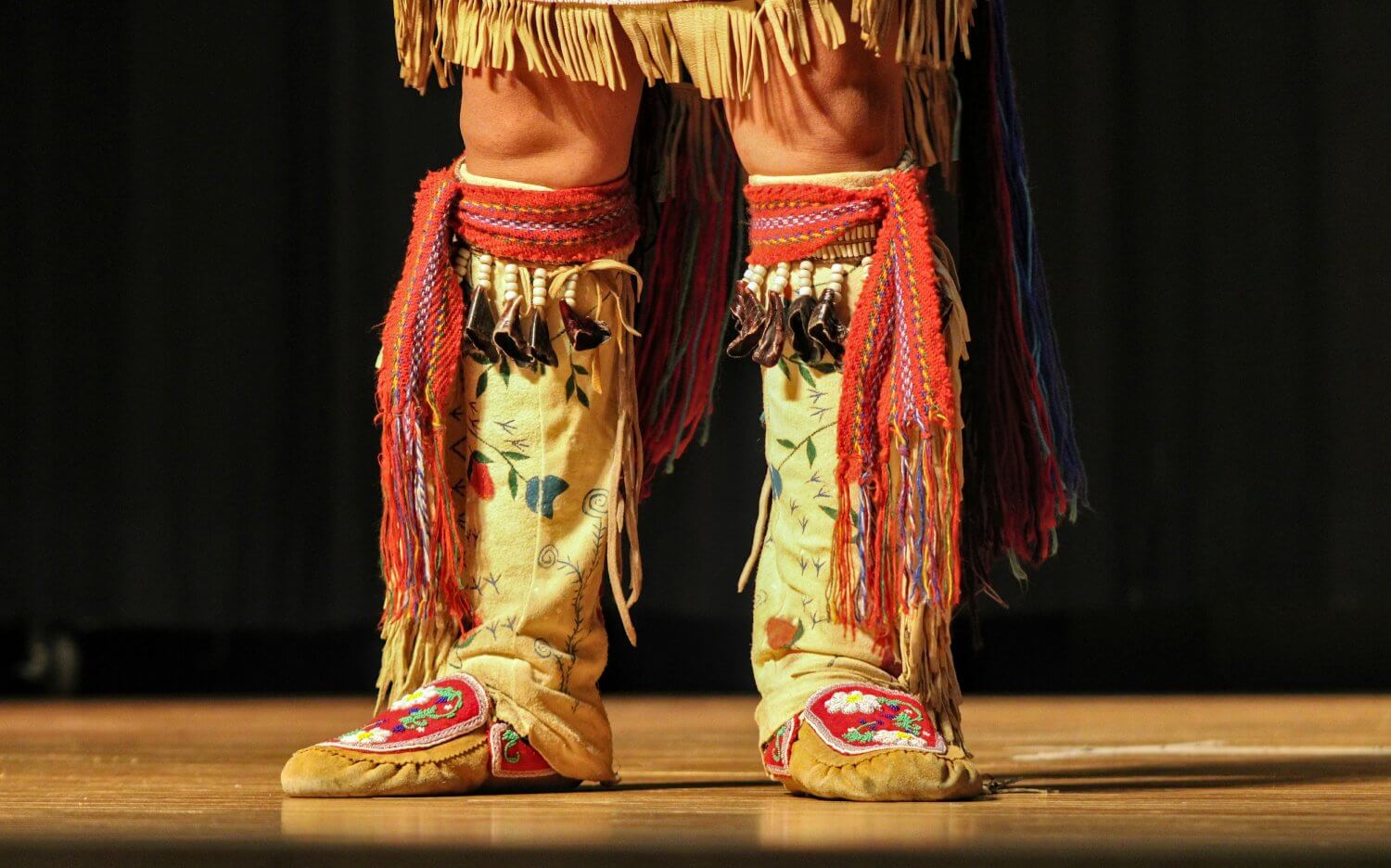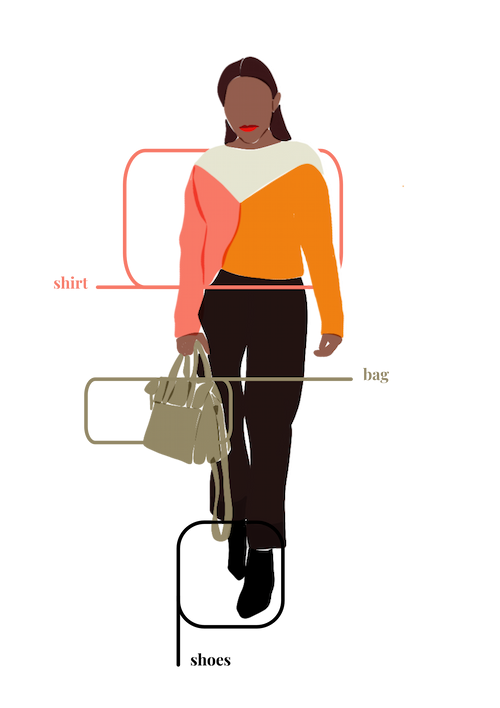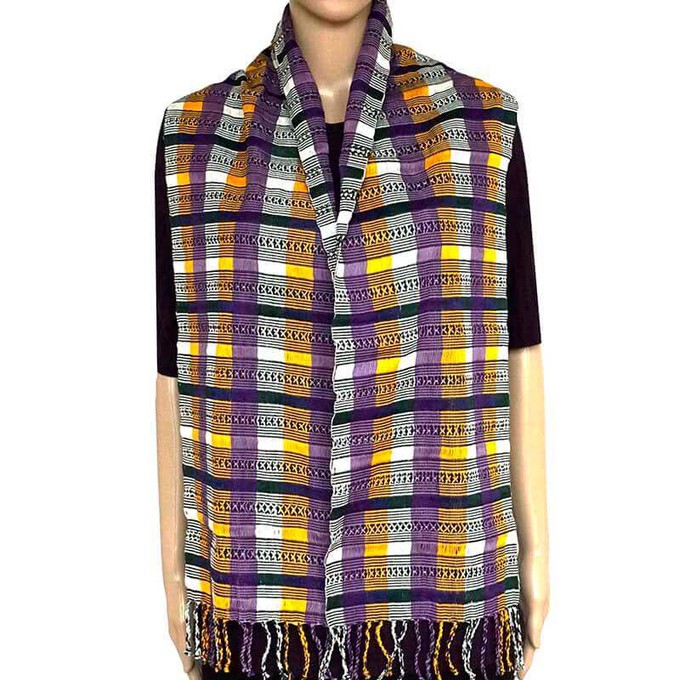- Clothes
- Bags
- Accessories
-
Inspiration
- Shoes
Native American Fashion: Naturally Slow, Stolen by Fast Fashion

I was thinking about how, even though they’re rarely talked about together, traditional Native American clothing has so much in common with eco-friendly and slow fashion.
The irony (or better, injustice)? Their unique patterns and designs keep getting appropriated, copied, and mass-produced by huge fast fashion companies. And that’s not the only challenge faced by Native American fashion designers.
So, here are my thoughts and what we can do about it—written by a European who’s always keen to (un)learn and has conducted plenty of research, but who’s 100% open to discussion if anything ended up being an accidental misrepresentation.
What is Native American fashion?
Traditionally, Native American fashion refers to the clothing and accessories created and worn by indigenous tribes.
Each tribe had their own traditions, and although they eventually adopted new materials after the arrival of Europeans (like beads, different dyes, or silk ribbons), they mostly used natural fabrics and resources available within their specific region. So, it can't be summed up in “one” style or look, and the same applies to the present time.
Nowadays, Native American fashion consists of clothes created by indigenous designers and brands, often homaging or reinterpreting traditional elements into modern designs, everyday wear, or high fashion.
Why I believe Native American fashion and slow fashion go hand in hand

At Project Cece, our platform bringing fair trade clothes in one place, we’ve been partnering with all kinds of ethical brands, mainly in Europe. While we’ve started branching into the American market, I’m finding eco-friendly brands to be rarer, in proportion.
Instead, thanks to its very traditions and roots, Native American fashion tends to be naturally slow and eco-conscious:
- Their cultural consideration towards the balance of the land means that natural and plant-based products are sourced with respect towards the environment
- They have a rich artisanal and sartorial history, harnessing their craftsmanship to create durable clothes (not throwaway ones)
- Clothes have always been repaired, repurposed, and passed down through generations
- From designs to purpose, clothes are made with meaning and timelessness in mind, not temporary trends
And all this reminds me of slow fashion: designing, marketing, purchasing, and wearing clothes mindfully (rather than chasing trends or buying them without questioning how they were made).
But fast fashion keeps stealing from Native American designers and brands
Unfortunately, there have been countless cases of non-native brands:
- Appropriating the patterns and Native American clothing styles that are part of a tribe’s culture, without consulting them (let alone compensating them)
- Ripping off the clothing designs of indigenous designers and small brands
- Mass-producing cheap knock-offs of high-quality, craftsmanship pieces that require a lot of labour or premium materials (so, actual Native American brands can’t compete on price)
It’s usually fast fashion brands but some luxury ones are guilty, too. Just to name a few:
- H&M used to sell a Native American-inspired feather headdress as a “hipster” accessory
- KTZ was accused of copying a dress by Native designer Bethany Yellowtail
- Urban Outfitter used the Navajo pattern and tribe name without permission
- Non-Native company Minnetonka was accused of profiting off Native culture by selling shoes inspired by their traditions without honouring their culture or collaborating with actual Native American designers
- Ralph Lauren was criticised by Mexican officials for copying Indigenous designs
- SHEIN (which is notorious for stealing from smaller brands and independent designers) was accused of cultural appropriation by Mexico’s Ministry of Culture after using distinctive elements of the identity of the Nahua people for several garments
Native American fashion brands face additional challenges, too
On top of luxury and fast fashion stealing their designs and appropriating their culture, many Native American brands also have to deal with:
- Difficulty to compete in a world dominated by overconsumption and fast fashion trends
- The fine balance between cultural integrity (and keeping their history and craftsmanship techniques alive) and matching contemporary demands and expectations from modern consumers
- Limited access to global distribution channels and lower marketing budgets, making it harder to reach a wide audience and be profitable
- Harmful stereotypes, like having their culture portrayed as “an aesthetic” or reduced to war bonnets and Pocahontas-style outfits
- Tariffs (which aren’t affecting just Native American brands, of course… but they certainly don’t help)
What you can do to support Native American clothing brands and designers
- Educate yourself – Not everyone is aware of the difference between actual Native clothes and mass-produced knock-offs, or of just how harmful the latter are. So, the fact that you’re here reading this article is a great first step!
- Buy from actual Native American fashion brands and designers rather than “Native American inspired clothing”– If in doubt, look at their website and online store: is that brand Native-owned? Or if not, do they genuinely partner with Native American designers or garment workers, paying them fair wages? And to put it into perspective: yes, handmade or eco-friendly items made to last tend to cost more than fast fashion. But when you break free from the vicious cycle or chasing trends and buying new clothes every other week? You can genuinely save money in the long run
- Support them for free – Even when you’re not in a position to buy, there are lots of free ways to support small brands and designers. For example, you could recommend them to your friends, add their clothes to your wishlist when someone asks what you want for your birthday, or share and interact with their social media content to help them reach more customers
Native American clothing history has so much in common with slow fashion but is being crushed and ripped off by fast fashion giants.
Now that we know the true cost of cultural appropriation and headdresses sold as hipster accessories, we can start being part of the solution—rather than the problem.
Share our story
Related articles
Tariffs & Ethical Fashion: Will You Lose Your Favourite Brands?
How are the new tariffs impacting sustainable brands in the US (& beyond)? After seeing many wonderful one go bankrupt with Brexit, we have a bad feeling.
Is Boho Fashion Cultural Appropriation? The Problem with 'Gipsy'
Is your festival outfit problematic? From its origins to marginalised communities, let’s find out together whether boho fashion is cultural appropriation.
Ethical Fashion Brands Are Struggling: Free & Paid Ways to Help
More and more sustainable fashion brands are going bankrupt, but there’s so much we can do to help them (even for free)
Project Cece is a platform that collects ethical fashion from vetted brands and shops in one place. Browse ethical fashion for women and men and find items that fit your style, budget and values!


_large.png)


